Kingdom Animalia Order Strigiformes Length 35 – 40 cm | Phylum Chordata Family Strigidae Scientific name Asio otus Mass 250 g Rank Species | |
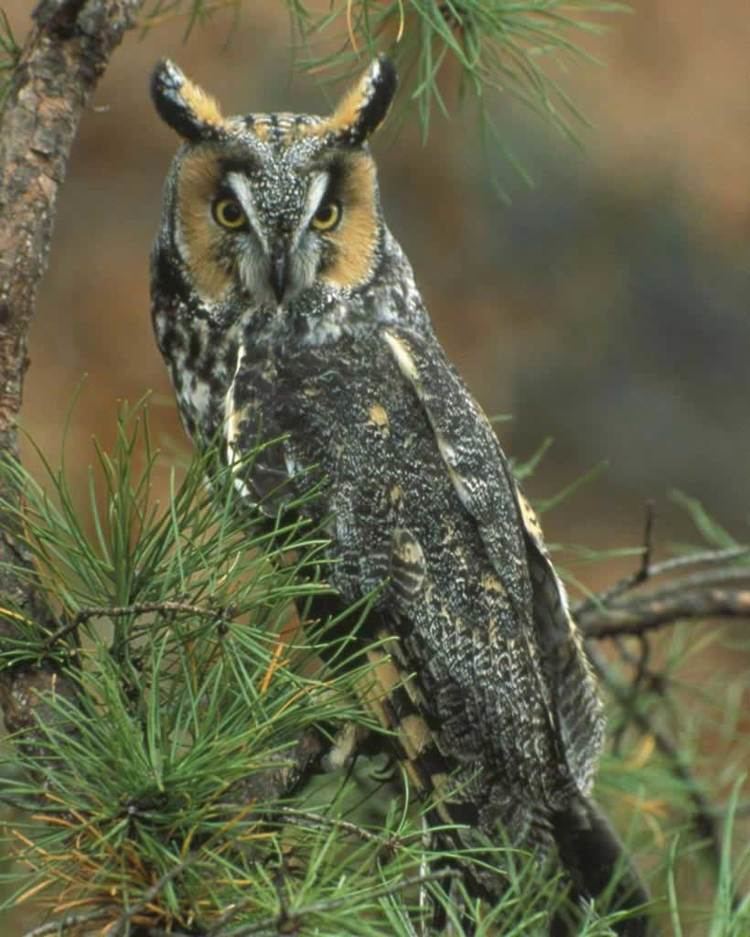 | ||
Conservation status Least Concern (Population decreasing) Similar Owl, Short‑eared owl, Little owl, Bird, Eurasian eagle‑owl | ||
The long-eared owl (Asio otus, previously Strix otus) is a species of owl which breeds in Europe, Asia, and North America. This species is a part of the larger grouping of owls known as typical owls, family Strigidae, which contains most species of owl. The other grouping of owls are the barn owls, family Tytonidae.
Contents
- An introduction to the long eared owl asio otus by wild owl
- Description
- Separation from short eared owl
- Behaviour
- Subspecies
- In art
- References
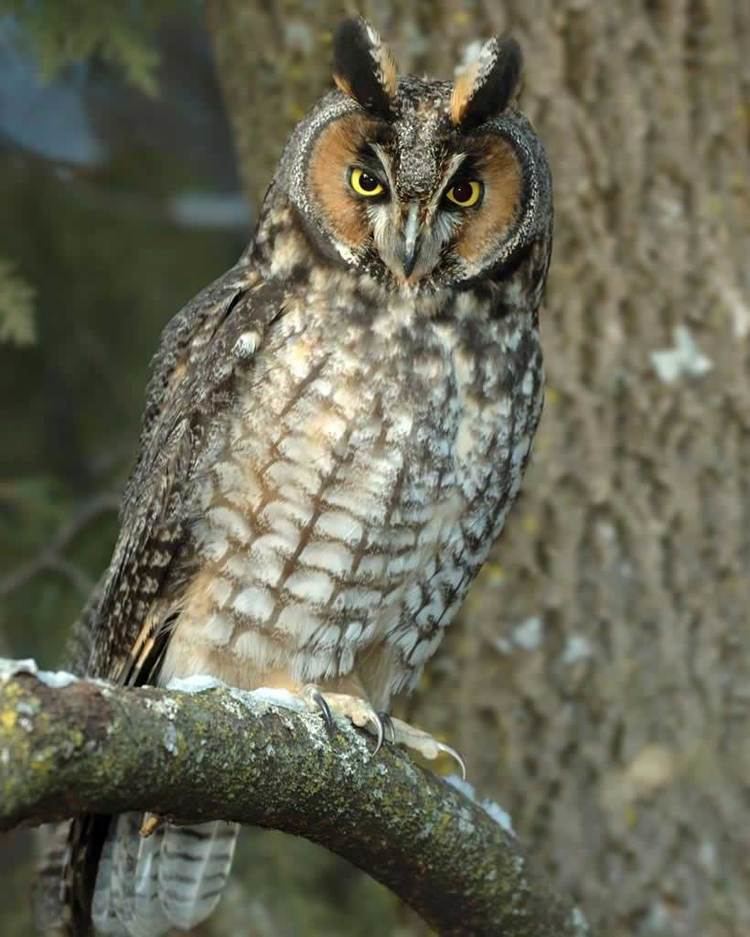
The scientific name is from Latin. The genus name Asio is a type of eared owl, and otus also refers to a small eared owl.
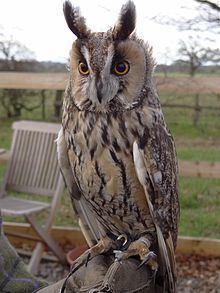
An introduction to the long eared owl asio otus by wild owl
Description
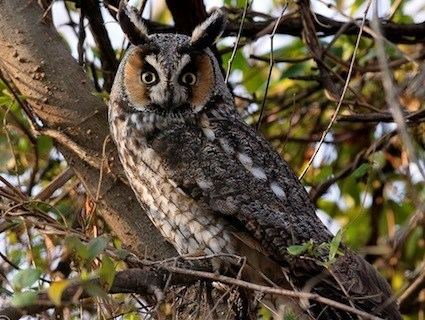
The long-eared owl is a medium-sized owl, 31–40 cm (12–16 in) in length with an 86–100 cm (34–39 in) wingspan and a body mass of 178–435 g (6.3–15.3 oz). It has erect blackish ear-tufts, which are positioned in the centre of the head. The ear-tufts are used to make the owl appear larger to other owls while perched. The female is larger in size and darker in colouration than the male. The long-eared owl's brownish feathers are vertically streaked. Tarsus and toes are entirely feathered. Eye disks are also characteristic in this species. However, the eye disks of A. otus are darker in colour or rusty-orange. This nocturnal species is perhaps most easily seen perched in a tree in its daytime roost, sometimes in small groups during the winter months. There are about six thousand long eared owls in The United States, and fifty thousand in the whole world.
Separation from short-eared owl
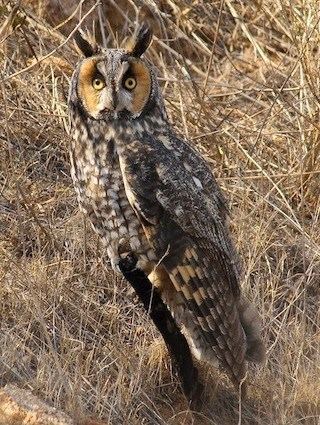
Over much of its range, long-eared owls occur with the similar-looking short-eared owl. At rest, the ear-tufts of the long-eared owl serve to easily distinguish the two (although long-eared owls can sometimes hold their ear-tufts flat). The iris-colour differs: yellow in short-eared, and orange in long-eared, and the black surrounding the eyes is vertical on long-eared, and horizontal on short-eared. Overall, the short-eared owl tends to be a paler, sandier bird than the long-eared. There are a number of other ways in which the two species differ which are best seen when they are flying:
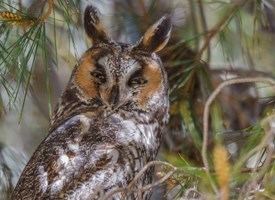
Behaviour
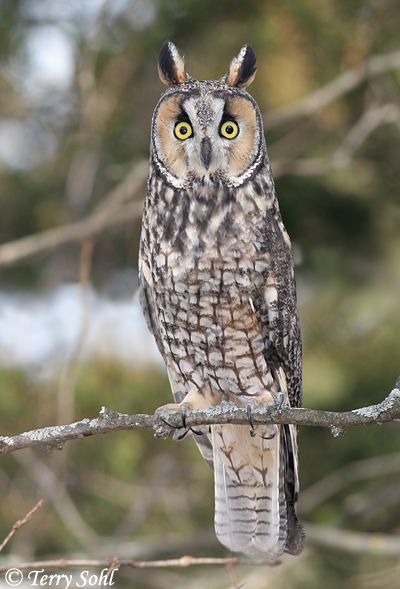
The long-eared owl's breeding season is from February to July. This bird is partially migratory, moving south in winter from the northern parts of its temperate range. Its habitat is forest close to open country. Overall, these owls are secretive, and are rarely seen.
It nests in trees, often coniferous, using the old stick nests of other birds such as crows, ravens and magpies and various hawks. The average clutch size is 4–6 eggs, and the incubation time averages from 25–30 days. It will readily use artificial nesting baskets. An unusual characteristic of this species is its communal roosting in thickets during the winter months. The young have a characteristic call, likened to a rusty hinge.
The long-eared owl hunts over open country by night. It is very long winged, like the similar short-eared owl, and glides slowly on stiff wings when hunting. Its food is mainly rodents, small mammals, and birds. In Europe it faces competition from the tawny owl and is most numerous in localities where the tawny is absent, notably in Ireland, where the long-eared is the dominant owl; it can occasionally be seen even in Dublin city centre.
Subspecies
Four subspecies are recognized:
In art
John James Audubon illustrates the "Long-eared Owl - Strix otus" as Plate 383 in Birds of America, published London, 1827-38. The print was engraved by Robert Havell in 1837. The original watercolour was purchased from Audubon's destitute widow by The New York History Society where it remains to this day.
